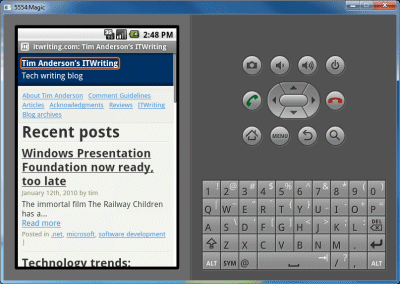Joe Wilcox has a good post about Microsoft’s decade of shattered dreams. These are all things in which the company invested, but did not get right: eBooks, HailStorm web services, digital music, Origami small computing devices.
The list is longer than that of course. Tablet PC is a big one; we’ll see what happens to Apple’s efforts. And when I researched a retrospective on .NET recently I was struck by how well Microsoft got the mash-up idea: building block services pulled together by .NET web sites or client applications. And let’s not forget that Microsoft demonstrated Ajax partial page refresh in September 2000. These ideas have not been total failures at Microsoft, but their potential has been realised mainly by others.
That brings me to Hotmail (also known as Live Mail), the web-based email service that launched in 1996 and was acquired by Microsoft in late 1997. Microsoft was long teased for keeping it running on Unix while promoting Windows Server; that is emphatically no longer the case, as explained in two recent blogs by Arthur de Haan and Dick Craddock. It was moved off Unix in 2004, and rewritten in C# and ASP.NET in 2005. According to de Haan, it is the largest SQL Server 2008 deployment in the world. Impressive.
It would be absurd to call Hotmail a failure, when it has 1.3 billion inboxes and 350 million active users. Nevertheless, when I read or hear people recommending a web-based email service, it is almost always Google Gmail, not Hotmail (nor Yahoo for that matter). There are several people with whom I communicate professionally at Gmail addresses, none that I can think of on Hotmail.
Last year, Information Week reported that in the USA Gmail was set to overtake Hotmail in 2009; I do not know if it did so, but it would not surprise me, though internationally Hotmail is likely still ahead. Yahoo was well ahead of both, but will not be immune to the Google effect.
How has Google managed to steal mindshare away from Microsoft’s long-established service?
One reason is that Google got it right pretty much from the first public beta, whereas Hotmail has made pretty much every mistake in the book, though it has gradually corrected most of them. For a long time my Hotmail account was nearly unusable because of spam, whereas Gmail has great spam filters. Hotmail had inadequate storage, until Gmail turned up with 1GB of storage and its competitors quickly followed suit.
Another factor is the user experience. When I go to Gmail, I get a full page dedicated to email, and it is responsive and generally pleasant to use. The Hotmail UI is busier, the ads are more intrusive, and it takes longer to load.
Still, Hotmail is usable and much better than it once was. What else is wrong?
There is a clue in comments to de Haan’s blog. Hotmail has traditionally been awkward if you want to use offline mail clients, which is odd considering Microsoft’s “software plus services” approach. The Outlook Live Connector has always been troublesome. POP3 support eventually arrived, but users want IMAP as offered by Google.
Another problem is that Hotmail has never seemed core to Microsoft’s strategy. We all know how Microsoft does email, and it is not Hotmail, it is Exchange. Hotmail is a consumer service. Both marketing and product integration efforts are mainly focused on Exchange.
Despite its 350 million users, I reckon Hotmail needs a Bing-style makeover.

